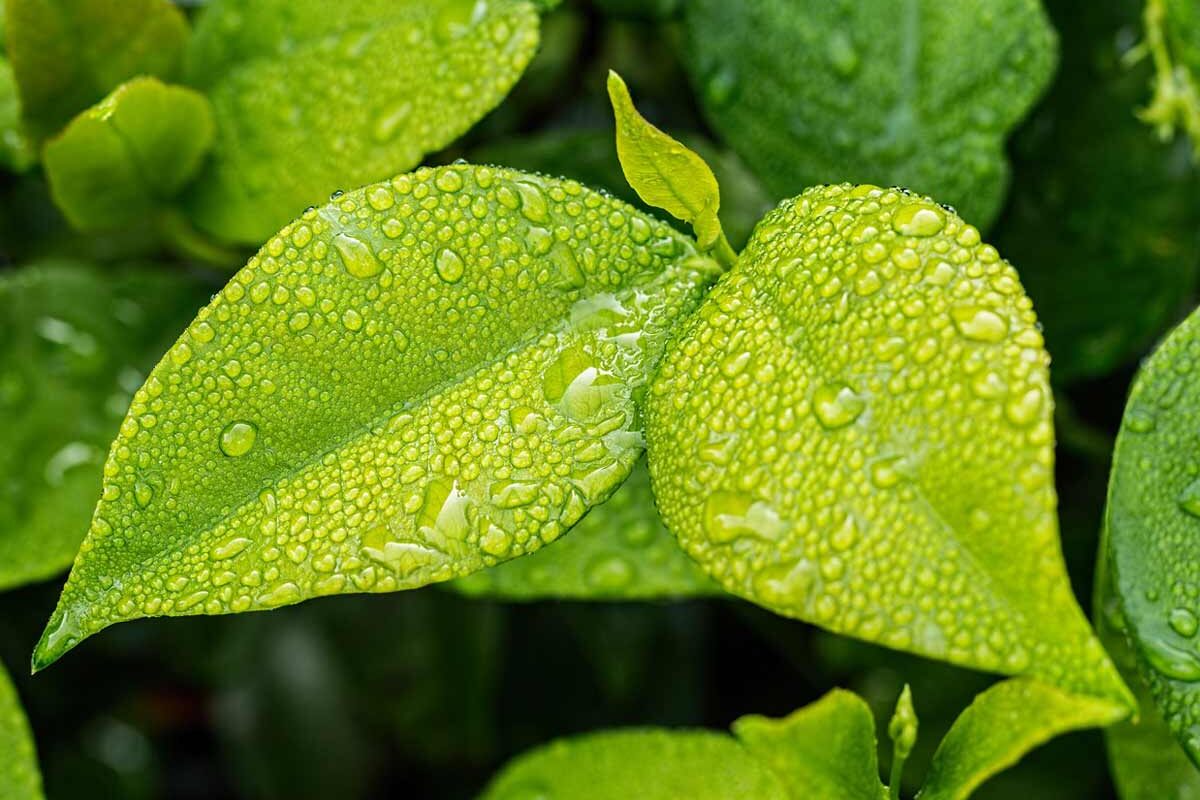Tea leaves, imagine a tiny bud, nestled amongst emerald leaves on a tea bush basking in the warm sunshine. This unassuming bud holds the potential to transform into a beverage that invigorates the senses and soothes the soul. Through a meticulous journey of processing, this humble bud will embark on a remarkable metamorphosis, taking on a multitude of personalities and flavors depending on the techniques employed.
This article serves as your invitation to explore the fascinating world of tea. We will delve into the secrets behind the scenes, unveiling the various processing methods that transform a simple tea leaf into the diverse spectrum of teas we know and love. From the delicate notes of a white tea to the robust character of a black tea, each processing method unlocks a unique flavor profile waiting to be discovered. Get ready to embark on a sensory adventure as we explore the world of white, green, yellow, oolong, black, and pu-erh teas, their processing methods, and the captivating flavors that emerge.
A World of Leaves: The Camellia Sinensis Plant
Unassuming yet remarkable, the Camellia sinensis plant is the unassuming hero behind every cup of true tea you enjoy. This versatile shrub, native to the foothills of the Himalayas in Southeast Asia, has been cultivated for millennia, gracing cups and steeping traditions across the globe. But what makes this single plant capable of producing such a stunning array of flavors, from the delicate notes of green tea to the robust richness of black tea? The answer lies in the magic of processing.
A Spectrum of Flavors:
The Camellia sinensis plant possesses a treasure trove of flavor potential within its emerald leaves. These inherent characteristics are then unlocked and accentuated through various processing techniques. Imagine a talented artist transforming a lump of clay into a masterpiece; the processing of tea leaves is akin to this artistic alchemy. By controlling factors like oxidation, drying methods, and rolling techniques, tea producers unveil the unique flavor profiles that lie dormant within the leaves.
The Influence of Terroir:
Just like a grape grown in the sun-drenched vineyards of Italy will produce a different wine than one cultivated in the cool, misty hills of France, the terroir, or the specific growing conditions, plays a significant role in shaping the character of tea leaves. Climate, soil composition, and altitude all contribute to the unique symphony of flavors that each tea expresses.
Sun-Kissed or Shade-Drenched:
Tea plants grown in regions with abundant sunshine tend to produce bolder leaves with more robust flavors. Conversely, tea plants grown in shaded areas yield more delicate leaves with subtler flavor profiles. For instance, shade-grown Japanese green teas like Gyokuro are renowned for their vegetal sweetness and umami character, a testament to the influence of their sheltered environment.
Soil Stories:
The soil in which a tea plant thrives also tells a story in the cup. Rich, mineral-laden soils can impart depth and complexity to the tea, while teas grown in sandier soils might exhibit a lighter, brighter character. Consider the mineral-rich volcanic soils of Japan, which contribute to the distinctive umami character of Sencha green tea.
Altitude Adventures:
The elevation at which tea plants are grown also plays a role. Higher altitudes typically have cooler temperatures and slower growth rates, resulting in tea leaves with a higher concentration of essential oils and more nuanced flavor profiles. Darjeeling teas, grown in the lofty Himalayas, are a prime example, known for their delicate floral notes and brisk astringency.
Harvesting Techniques: A Delicate Dance
The timing and method of harvesting also influence the final quality and flavor of the tea. Traditionally, tea leaves are handpicked, a meticulous process that ensures only the finest, youngest leaves are selected. These young leaves boast the highest concentration of flavor compounds and contribute to a smoother, more delicate tea. Machine harvesting, while faster and more efficient, can result in a blend of younger and older leaves, potentially leading to a more robust or even slightly bitter cup.
Understanding the impact of growing conditions and harvesting techniques on tea leaves is the first step on your journey to appreciating the vast and wonderful world of tea. In the following sections, we will delve deeper into the fascinating world of tea processing, exploring how these methods transform the humble tea leaf into the diverse and flavorful beverages we cherish.
A World of Leaves: The Camellia Sinensis Plant
Unassuming yet remarkable, the Camellia sinensis plant is the unassuming hero behind every cup of true tea you enjoy. This versatile shrub, native to the foothills of the Himalayas in Southeast Asia, has been cultivated for millennia, gracing cups and steeping traditions across the globe. But what makes this single plant capable of producing such a stunning array of flavors, from the delicate notes of green tea to the robust richness of black tea? The answer lies in the magic of processing
A Spectrum of Flavors:
The Camellia sinensis plant possesses a treasure trove of flavor potential within its emerald leaves. These inherent characteristics are then unlocked and accentuated through various processing techniques. Imagine a talented artist transforming a lump of clay into a masterpiece; the processing of tea leaves is akin to this artistic alchemy. By controlling factors like oxidation, drying methods, and rolling techniques, tea producers unveil the unique flavor profiles that lie dormant within the leaves.
The Influence of Terroir:
Just like a grape grown in the sun-drenched vineyards of Italy will produce a different wine than one cultivated in the cool, misty hills of France, the terroir, or the specific growing conditions, plays a significant role in shaping the character of tea leaves. Climate, soil composition, and altitude all contribute to the unique symphony of flavors that each tea expresses.
Sun-Kissed or Shade-Drenched:
Tea plants grown in regions with abundant sunshine tend to produce bolder leaves with more robust flavors. Conversely, tea plants grown in shaded areas yield more delicate leaves with subtler flavor profiles. For instance, shade-grown Japanese green teas like Gyokuro are renowned for their vegetal sweetness and umami character, a testament to the influence of their sheltered environment.
Soil Stories:
The soil in which a tea plant thrives also tells a story in the cup. Rich, mineral-laden soils can impart depth and complexity to the tea, while teas grown in sandier soils might exhibit a lighter, brighter character. Consider the mineral-rich volcanic soils of Japan, which contribute to the distinctive umami character of Sencha green tea.
Altitude Adventures:
The elevation at which tea plants are grown also plays a role. Higher altitudes typically have cooler temperatures and slower growth rates, resulting in tea leaves with a higher concentration of essential oils and more nuanced flavor profiles. Darjeeling teas, grown in the lofty Himalayas, are a prime example, known for their delicate floral notes and brisk astringency.
Harvesting Techniques: A Delicate Dance
The timing and method of harvesting also influence the final quality and flavor of the tea. Traditionally, tea leaves are handpicked, a meticulous process that ensures only the finest, youngest leaves are selected. These young leaves boast the highest concentration of flavor compounds and contribute to a smoother, more delicate tea. Machine harvesting, while faster and more efficient, can result in a blend of younger and older leaves, potentially leading to a more robust or even slightly bitter cup.
Understanding the impact of growing conditions and harvesting techniques on tea leaves is the first step on your journey to appreciating the vast and wonderful world of tea. In the following sections, we will delve deeper into the fascinating world of tea processing, exploring how these methods transform the humble tea leaf into the diverse and flavorful beverages we cherish.
Unveiling the Varieties: Processing Methods and Flavor Profiles
Tea leaves, like diamonds in the rough, undergo a fascinating transformation before steeping into a delicious and invigorating beverage. This section will unveil the secrets behind the various processing methods, exploring how they unlock the unique flavor profiles of each tea variety.
White Tea – The Essence of Untouched Nature
White tea, the most minimally processed of all teas, embodies the delicate essence of the tea plant. Imagine this: fresh tea buds and young leaves are plucked at the peak of their growth, then simply allowed to wither and dry naturally. This gentle process preserves the tea’s natural antioxidants and volatile compounds, resulting in a liquor that is pale yellow in color with a whisper of green.
A Symphony of Subtlety: White tea boasts a flavor profile that is light, delicate, and nuanced. Imagine gentle notes of honeyed sweetness mingling with hints of fresh flowers and springtime meadows. The absence of strong oxidation allows the tea’s natural character to shine through, offering a refreshing and calming experience.
Steeping Tips: To unlock the delicate flavors of white tea, use cooler water (around 175°F) and shorter steeping times (1-3 minutes). This prevents the tea from becoming bitter and allows the subtle nuances to emerge.
Green Tea – Capturing Freshness
Green tea undergoes a slightly more involved process than white tea, but it still retains a significant amount of its fresh character. After plucking, the leaves are withered to remove surface moisture. The key step in green tea processing is fixation, a process that halts the natural oxidation process and preserves the tea’s vibrant green color and grassy notes. Fixation can be achieved through pan-firing, where the leaves are rapidly heated in large pans over high heat or steaming, a gentler method that utilizes steam to deactivate the enzymes responsible for oxidation.
A Celebration of Grassy Goodness: Green tea is renowned for its vegetal and grassy flavor profile. Depending on the specific type of green tea, you might detect notes of seaweed, cucumber, or even edamame. Some green teas, like Longjing, offer hints of sweetness and floral notes, while others, like Sencha, have a more pronounced grassy character.
Steeping Savvy: Green tea thrives with slightly hotter water (around 180°F) and moderate steeping times (1-3 minutes). Experiment with different steeping times to find your perfect balance of flavor and strength.
Yellow Tea – A Rare and Elusive Treasure
Yellow tea is a true rarity in the tea world, shrouded in mystery and intrigue. The processing of yellow tea involves a slow and controlled oxidation process that takes place after withering. The leaves are carefully monitored and turned throughout this delicate stage, allowing them to develop a mellow sweetness without losing their green character.
A Mellow Melody: Yellow tea boasts a unique flavor profile that is both mellow and slightly sweet. Imagine a gentle toasty note mingling with hints of honey and fruit. The subtle oxidation process creates a complex and intriguing cup that is unlike any other tea.
Steeping Secrets: Yellow tea, like its white tea cousin, thrives with cooler water (around 175°F) and shorter steeping times (1-2 minutes). This delicate approach allows the tea’s nuanced flavors to emerge without bitterness.
Finding Yellow Tea: Due to its labor-intensive processing, yellow tea can be difficult to find. However, the effort of seeking it out is rewarded by a truly unique and unforgettable tea experience.
Beyond the Basics: Factors Influencing Flavor
While the processing method plays a fundamental role in shaping a tea’s character, several other factors contribute to the delightful and diverse world of tea flavors we know and love. Buckle up, tea enthusiast, as we delve into the fascinating science behind the delicious cup in your hand!
Varietal Differences: A Universe of Flavor in Every Leaf
The Camellia sinensis plant boasts a surprising amount of genetic diversity, with different varietals offering unique flavor profiles even when processed similarly. Imagine two siblings raised in the same household – they might share some characteristics, but their personalities are likely distinct. The same principle applies to tea varietals!
For instance, the Assamica varietal, primarily grown in India and known for its bold, malty character, will produce a very different cup compared to the Sinensis varietal, commonly found in China and known for its delicate, vegetal notes. Even within these broad categories, there are countless sub-varieties, each adding its unique twist to the flavor story.
This incredible diversity allows tea producers to cultivate specific varietals best suited for different processing methods. Darjeeling, a world-renowned black tea, owes its distinctive muscatel flavor in part to the specific varietal it’s derived from. So, the next time you explore a new tea, consider researching the varietal it comes from – it might unlock a whole new dimension of flavor appreciation!

Oxidation Levels: A Dance with Time and Air
We previously explored the concept of oxidation, the process where tea leaves react with oxygen in the air. The level of oxidation plays a significant role in shaping a tea’s flavor profile. Imagine a spectrum, with green tea on one end (unoxidized) and black tea on the other (fully oxidized). In between lies a beautiful world of partially oxidized teas like oolong, offering a delightful dance between grassy and toasty notes.
- Green Tea: The unoxidized champion, green tea boasts a delicate, vegetal flavor profile with a subtle sweetness. Imagine sipping on a cup of freshly cut grass infused with a hint of honey – that’s the essence of green tea!
- White Tea: Minimally processed, white tea offers a light, refreshing cup with subtle floral notes. Think of it as a whisper of flavor, perfect for those seeking a delicate and nuanced experience.
- Oolong Tea: This partially oxidized tea bridges the gap between green and black tea. Depending on the oxidation level, oolong teas can range from grassy and floral to toasty and fruity, offering a complex and captivating flavor journey.
- Black Tea: Fully oxidized black tea boasts a bold, robust flavor profile with hints of malt or chocolate. Imagine a comforting cup that warms you from the inside out, perfect for a chilly afternoon.
Understanding the oxidation level of your tea allows you to choose the perfect cup for your mood and taste preferences. Do you crave a light and refreshing pick-me-up? Opt for a green tea. Yearning for a bold and invigorating cup? Black tea might be your perfect match. The world of tea offers something for everyone!
Roasting and Scents: A Symphony of Flavors
While oxidation is a fundamental processing technique, some teas undergo additional steps that further influence their flavor profile. Roasting, for example, involves applying heat to dry tea leaves. This process can deepen the flavor, add toasty notes, and even reduce bitterness. Imagine a cup of oolong tea taking on a richer, more caramelized character after roasting – a delightful transformation!
Scents, often involving flowers, fruits, or spices, are another way to enhance a tea’s flavor profile. Imagine jasmine green tea, where delicate floral notes dance alongside the tea’s natural grassy character. Scented teas offer a delightful fusion of flavors, perfect for those seeking a unique and aromatic experience.
Remember, these are just a few examples of additional processing techniques. The world of tea is brimming with experimentation and innovation, with producers constantly seeking new ways to tantalize our taste buds. So, keep an open mind and be willing to explore – you might just discover your new favorite cup!
Brewing for the Best: Techniques for Optimal Flavor
Now that you’ve embarked on your journey into the wonderful world of tea leaves, it’s time to explore the art of brewing the perfect cup. Just like the meticulous processing methods influence the character of the tea leaves, the brewing process plays a crucial role in unlocking their full flavor potential. By following these simple techniques, you can transform loose tea leaves into an exhilarating beverage that tantalizes your taste buds and invigorates your senses.
The Symphony of Water Temperature – Dancing with Flavor
Water temperature is the conductor in the orchestra of tea brewing, playing a vital role in extracting the optimal flavors from the delicate tea leaves. Imagine using boiling water for a green tea – the result would be a bitter and unpleasant brew. Conversely, using lukewarm water for a black tea wouldn’t release its full flavor potential. Different types of tea require specific water temperature ranges to unlock their unique characters.
-
Green Tea: Green tea thrives in cooler water temperatures, typically between 170°F (77°C) and 185°F (85°C). This lower temperature range helps preserve the delicate, vegetal notes characteristic of green tea, while avoiding the release of bitter tannins.
-
White Tea: Similar to green tea, white tea requires a gentle touch. Steep white tea leaves in water between 170°F (77°C) and 180°F (82°C) to coax out its subtle sweetness and floral notes.
-
Black Tea: Black tea, known for its bolder flavor profile, can withstand higher water temperatures. Ideally, steep black tea leaves in water between 195°F (90°C) and 205°F (96°C) to release its robust character and invigorating properties.
-
Oolong Tea: Oolong tea, the versatile chameleon of the tea world, occupies a middle ground in terms of water temperature. Depending on the specific type of oolong tea, the ideal water temperature can range from 185°F (85°C) to 205°F (96°C). Experimenting with water temperature within this range allows you to explore the spectrum of flavors oolong tea has to offer, from light and floral to toasty and complex.
Investing in a thermometer: While not essential, a tea thermometer can be a valuable tool, especially for beginners, to ensure you’re using the perfect water temperature for your chosen tea. However, with a little practice, you can learn to gauge the water temperature based on visual cues. For example, water that has just come to a boil and been allowed to cool slightly for a minute or two will be around the ideal temperature for green tea.
The Art of Steeping – A Delicate Dance of Time and Flavor
Steeping time is another crucial element in the symphony of tea brewing. Just like water temperature, the ideal steeping time varies depending on the type of tea. Over-steeping can result in a bitter and astringent brew, while under-steeping leaves the full flavor potential unrealized.
-
Green Tea: Green tea steeps quickly, typically between 1-3 minutes. Steeping for too long can result in bitterness. Pay attention to the color of the liquor (the brewed tea) – a light green hue indicates optimal steeping.
-
White Tea: Similar to green tea, white tea steeps quickly, typically between 2-4 minutes. The brewed liquor should be pale yellow with a subtle sweetness.
-
Black Tea: Black tea steeps for a slightly longer duration, typically between 3-5 minutes. A darker amber color in the liquor indicates a stronger brew. Adjust the steeping time based on your desired strength.
-
Oolong Tea: Oolong tea offers the most flexibility when it comes to steeping time. Depending on the type of oolong, steeping times can range from 2-7 minutes. Experiment with different steeping times to discover the flavor profile that resonates most with you.
The Art of Multiple Infusions: Some tea leaves, particularly higher quality ones, can be steeped multiple times. With each infusion, the flavor profile will change subtly, offering a nuanced tea experience. Experiment with increasing the steeping time slightly for subsequent infusions to compensate for the weaker brew.
Storing Your Tea Treasures – Preserving Freshness and Flavor
Just like any other culinary ingredient, proper storage is essential for preserving the freshness and flavor of your tea leaves. Here are some tips to ensure your tea leaves stay at their flavorful best:
- Airtight Containers: Loose tea leaves are susceptible to moisture and airborne contaminants. Store your tea leaves in airtight containers to prevent them from absorbing unwanted odors or losing their volatile flavor compounds. Opt for containers made from opaque materials like tin or ceramic, as sunlight can degrade the quality of tea leaves over time.
- Cool, Dark Place: Heat and light are enemies of tea leaves. Find a cool, dark place to store your tea stash. A pantry or a cabinet away from direct sunlight is ideal. Avoid storing tea leaves near the stove or oven, as the heat can accelerate their degradation.
- Whole Leaves vs. Broken Leaves: Whole tea leaves generally stay fresher for longer periods compared to broken or fanning (finely chopped) tea leaves. The larger surface area of broken leaves makes them more susceptible to oxidation and flavor loss. If you primarily purchase loose-leaf teas in broken form, consider buying smaller quantities more frequently to ensure optimal freshness. Health books, guides, exercises, habits, Diets, and more
- Separate Storage for Different Types: If you enjoy a variety of teas, it’s recommended to store them in separate containers. This will prevent stronger flavored teas from imparting their aroma to more delicate varieties.
Beyond the Basics
While these brewing techniques provide a solid foundation, there’s always room for experimentation and customization. Here are some additional tips to elevate your tea brewing experience:
- Pre-heating your teapot: Warming your teapot with hot water before steeping your tea helps maintain a consistent water temperature throughout the brewing process, leading to a more even extraction of flavor.
- Using filtered water: While tap water may suffice, using filtered water can improve the taste of your tea, especially if your tap water has a strong mineral content or chlorine taste.
- Following your senses: As you gain experience, you’ll develop an intuition for steeping times based on the aroma and visual cues of the tea leaves as they steep. Don’t be afraid to experiment and adjust steeping times to suit your personal preferences.
- Embrace the ritual: The process of brewing tea can be a mindful and meditative experience. Take the time to savor the aroma of the steeping leaves, the gentle clinking of the teapot, and the warmth of the cup in your hands. Tea brewing is an opportunity to slow down, appreciate the moment, and connect with your senses.
By following these tips and techniques, you’ll be well on your way to brewing the perfect cup of tea, unlocking the full flavor potential of the delicate tea leaves, and embarking on a sensory journey that is both invigorating and delightful. Tea, Coffee, Energy Drinks, Juice, Beverage, Smoothie, and more
Remember: There’s no single “right” way to brew tea. Experiment, have fun, and discover what brewing methods and flavor profiles resonate most with you. The world of tea is vast and waiting to be explored, offering endless possibilities for flavor discovery and personal connection. So, grab your favorite teapot, select your chosen tea leaves, and embark on your unique tea-brewing adventure!
Final thought: Unveiling the Magic of Tea
The journey from a tea bush to a steaming cup of tea is nothing short of remarkable. As we’ve explored, the processing methods employed by tea artisans play a pivotal role in shaping the character and flavor profile of each tea varietal. From the gentle withering of white tea leaves to the robust oxidation of black tea, each step in the process influences the final product.
This exploration is just the beginning of your tea odyssey. We invite you to embark on a journey of discovery, venturing beyond the familiar and exploring the vast world of teas and processing methods. Experiment with different types of tea, steeping times, and water temperatures to find your perfect cup. Tea appreciation goes beyond just the taste; it’s about understanding the process, the rich history and culture surrounding tea, and the mindful ritual of savoring each sip. So, steep a cup of your chosen tea, breathe in the inviting aroma and allow yourself to be transported to a world of serenity and mindful enjoyment.
Other Interesting Articles
- 20 Proven Health Benefits of Drinking Tea Before Having Sex
- 22 Proven Health Benefits of Drinking Tea Before Bedtime
- 21 Proven Health Benefits of Drinking Black Tea with Milk
- 21 Health Benefits of Scottish Afternoon Tea, Side Effects
- 20 Health Benefits of Assam Tea: Recipe, Side Effects
- 22 Health Benefits of English Breakfast Tea, Side Effects
- 18 Health Benefits of Darjeeling First Flush Tea, Side Effects
- 21 Health Benefits of Chinese Black Tea: Recipe, Side Effects
- 20 Health Benefits of Duchess Grey Black Tea, Side Effects
- 21 Proven Health Benefits of Drinking Tea in Kulhad (Kulhar)
- 20 Proven Health Benefits of Drinking Tea while Pregnant
- 22 Health Benefits of Drinking Green Tea After Workout
- 24 Health Benefits of Drinking Chamomile Tea in the Morning
- 21 Proven Health Benefits of Drinking Tea Instead of Coffee
- Drinking Milk Tea in the Morning On an Empty Stomach: Pros, Cons
- 21 Proven Health Benefits of Drinking Black Tea in the Morning
- 21 Hidden Disadvantages of Drinking Excessive Tea At Night
- 22 Silent Disadvantages of Drinking Tea After Meals
- 20 Benefits of Drinking Green Tea in the Morning Empty Stomach
- 50 Most Popular Types of Non-Alcoholic Beverages & Drinks



